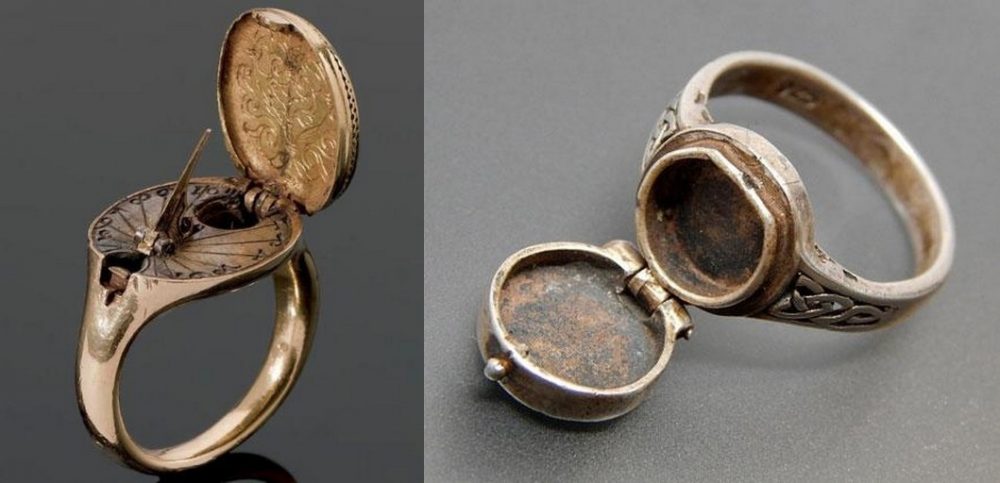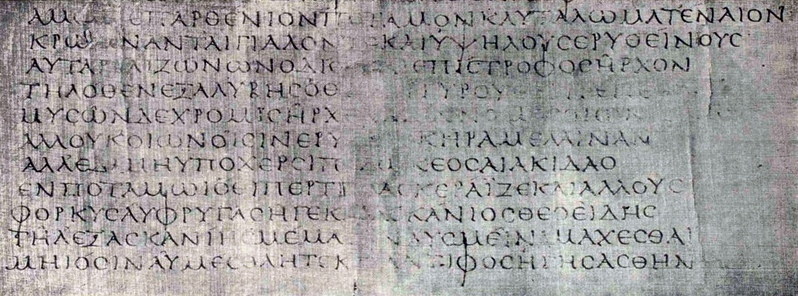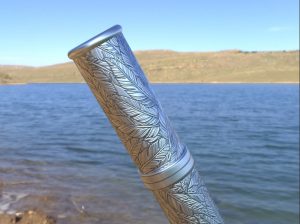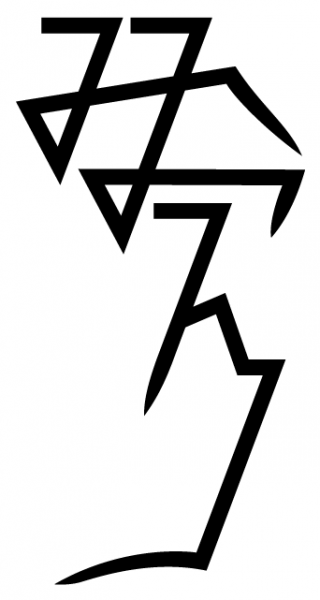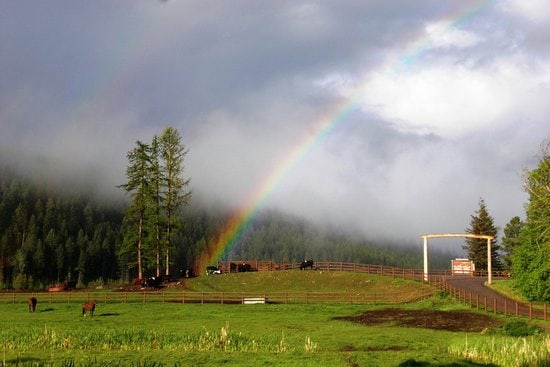It seems like we haven't had a musical evening for a long time, right? I'm of the same opinion, so get folk metal straight from Tivia. A little eji, but still good.
Cats in totemism
Not very significant news, but also quite important. Our former chief of the expedition, Ihar Edevran Samuilovich (we once even wrote a little about him) published a monograph entitled “Totemism and animalistic beliefs of people in the territories of Orova and Northern Getulia in connection with contacts with the Geartian tribes" The meaning of the work is clear from the title; Now it seems that it is not freely available anywhere, so for now we will present a few important points. Suddenly it becomes interesting, and then you want to look for it yourself.
Some patterns can be traced between the prevalence of totemic beliefs and the frequency of contacts with Gearts. But they are not always quite obvious. For example, too close contacts with the Gearts lead to the gradual destruction of animalism (this is observed, in particular, in Northern Getulia). This happens, however, only in cases where the nature of the contacts is positive or at least neutral; Frequent and prolonged armed clashes, on the contrary, in some places led to the demonization of the image of the Gearts. With all the consequences, of course; This is partly true, by the way, for the Hellenes and Urtians. To a small extent, but still.
Going a little to the side, we will add that there is the following stereotype: all animalistic beliefs take their roots precisely from short-term and rare contacts with Gearts. We have to disappoint his followers: this is often not true. This also happens, of course (in particular, this is the most popular theory regarding the emergence of all sorts of Anuvis and others like them), but relatively rarely. As a counter-argument, we cite the Rechans, as well as the Germans and Svayts: at the beginning of our era, totemism and animalism were everywhere, blooming and smelling, but there were no traces of Gearts nearby. And attempts to explain this by earlier contacts also fail, since at the pre-Orean stage (when these contacts were still possible) we do not observe traces of either totemism or animalism.
In short, this is a short excursion. Thank you to Edevran Samuilovich for a very good job, and good health to you!
Rings and poison
The holidays are slowly coming, and we indulge in idleness and other procrastination. Accordingly, today’s post will be short and light.
Throughout history, people (and not only them) have come up with and invented a bunch of ways to kill. Cold steel, firearms, martial arts, poisons... We'll talk about the latter today. And a little about decorations.
The most popular and most effective combination is poison + ring/ring. For example, you can attach a hinged lid to it, under which there is a small granule with poison. You imperceptibly threw it into the wine - and that’s it, your opponent the next day is writhing in agony.
There are other options. One of these, for example, is described by an unnamed jeart guardian from Eryakhshar in his notes.
"…today I had the opportunity to explore a new and cunning weapon. It is a rich gold ring decorated with gems. Made for human hand. On its reverse side there is a thin and sharp spike with an inconspicuous hole. I did not open the ring, but I also know that there is a cavity inside it that was filled with some substance. From what I can see now, it looks a lot like one of our sleeping pills. I need more time, but if my guess is correct, then the one who did this thing is very smart: after all, just a small portion of it can put a person, an alva, a geart or a dverg to sleep in a very short time. All you have to do is walk up to someone, tap him on the shoulder, and then follow him a couple of dozen steps until his legs begin to tangle. And then do whatever you want with your victim.".
That's how things are. The conclusion is - look carefully at what is in the hands of people who touch you too actively.
Frogs!
Find!
Not too impressive this time, but interesting nonetheless. A small collection of various household magics used here and there in the first half of the fourth century. Of course, we do not provide verbatim descriptions and instructions (we know you, yeah), but we will briefly show some of the most interesting ones.
- Spell on toads
Originally from northern Eryakhshar. The fact is that there are a lot of bodies of water there - and, accordingly, midges. It seems that even all sorts of natural repellents didn’t help much, so... toads.
"...one of the guardians is supposed to go around all the lakes and swamps near his village at the very beginning of spring. He enters each of them up to his waist, having previously drawn the following Azur signs on the water surface: ...
His thoughts should be turned to life playing around him, because it is at this time that toads spawn...»
- For different tastes of alcohol
These were used mainly by the Glinnarians and, again, by the Eryakhshar Dzherarts. It is to them that we owe, for example, the existence of such a drink as saerwine - a type of semi-sweet wine, which, however, is almost devoid of taste. It looks and drinks almost like ordinary water, which by the end of the bottle can... play a bad joke, let's say.
Its Eryakhshar analogues have an even more pleasant and subtle taste, but also a higher degree: somewhere around thirty to forty, almost like vodka. And the hangover from them... is not the most pleasant. My head is VERY dizzy.
We don’t give specific quotes, because it all involves reading certain spells at different periods of the drink’s ripening. Gearts also do this during distillation.
- For goat's milk
Can you guess whose it is? Kharassukhumi doors. Even after they went deep into caves and mountains, goat raising was still one of their first and most important activities.
"... let the priest, or better yet two - husband and wife - go around all the goats of each herd every month. While one of them is holding the goat for the horn, the second touches the udder with his lips and, turning his external and internal gaze to it, says this: ...
This way the milk in the udder will remain longer and will hardly stagnate.".
Have delicious milk everyone and see you in touch!
Ancient or archaic?
Next in line will be a post about Kharassukhumi writing, and while it’s being prepared, I’ll write about something for which I don’t need additional materials - just my head.
Archaic modern languages.
I think each of you has heard the phrase “ancient language” at least once in your life. Our natives call Retsinsky and Rechansky ancient and argue which one is more ancient; Skadinsky, ancient Hellenic and a few more - in general, they are certainly ancient. Is it true?
No!
Let's start with the fact that all languages are equally ancient. For example, because they all appeared during the Khivris pandemonium. Or, in other words, because they have been continuously evolving since the very dawn of the emergence of intelligent species. I can give a few more examples, but I think it’s clear.
Much more correct from the point of view of common sense would be the phrase “archaic language” - that is, one that has changed very little over a long period of time and has retained many of the features that were inherent in it even then, a long time ago. So, just for general erudition, I’ll go through them now. For now, according to those that are in use in Orov.
1. Zhutovsky wins by a wide margin! Others can argue with him as they please, but the fact remains: over the past two and a half thousand years, he has hardly changed. Perhaps the vocabulary has been updated, but this is quite natural. Now, for example, I will show one phrase from a song, first in its modern form, and then - how it would have looked somewhere at the beginning of our era. Provided that all the words are the same, of course.
kaip obelis, apsunkusi nuo vaisių, užlaužiu tragiškai nusvirusias rankas
kaip ābelis, apsunku(n)sī nō waisjun, užlaužjū tragiškai nuswiru(n)sja(n)s ranka(n)s
as you can see, except for the word tragiškai (“tragically”), which then in principle could not exist, the rest looks as similar as possible. The name of the song is Laisvė (“Freedom”), I think I already threw it here once.
2. Geartoy. Starting somewhere from the seventh century, it remains practically unchanged, but in the interval between the fifth and sixth centuries its system of times was VERY reworked. In addition to the three already existing numbers (singular, plural and dual), a spider (“several”) was added there, and the species-time system almost doubled in size (all sorts of perfects in the future and other terrible things). In phonetics, several minimal changes occurred, of which the most characteristic is: diphthongs āy and ay (a:y and ah) merged into one diphthong oh (Ouch). That is, if earlier their language was called jeārţāy, then now he is known to everyone under the name jeārţoy. So it goes.
3. Kharassukhumi. I understand it, alas, disgustingly, but the changes, as far as I can judge, are quite ordinary. Morphologically, everything remained the same plus or minus (if we count from the beginning of our era), the word order became much more strict, and the vowels also moved in all possible and impossible directions. This happened due to the influence of consonants (both the previous and the following), and... the fact is that in Kharassukhumi it is the set of vowels of a word that expresses its morphological meaning. Previously, this system was very transparent, but now look for yourself:
was: yadqañr, "he dwells"
became: edqañr
was: yaqrañb, "he is dying"
became: yaqrañb
was: yawẓañr "He is known"
became: ... oẓeñr
I won’t continue further, it’s bad there.
And finally. Ask why I didn’t say about the Alvian languages? Because they are cheaters, they live a long time and they preserve their literary standards very carefully, so it is generally useless to look there. Thousands of years have passed and nothing has changed.
That's all. Stay tuned for updates and don't get too bored!
Pole
Remember what I said earlier about the weapon of this very spear maiden? We found out that her name (name?) is Gweylen, yes, but that's not that important right now. In addition to the protazan, we also found a pole with a dagger! Here is the first one and hold it now.
There is also a very beautiful etched image of a tiny heraldic eagle at the end, but we will add it later.
The pole is 195 centimeters long, by the way. If I remember correctly, the poles of these girls were only slightly longer than their height - that is, we can assume that Gweylen herself was about 190 centimeters tall. A lot for a human, but just right for an alva.
Maiden named Gwailen
We were so carried away by all sorts of different things that we completely forgot that the story with the protazan was still continued!
The examination went well, and a certain mark was found on the blade (see attached image), which reads in Glinnar as Gweilen, Gweilen. No, this is not the name of the weapon: the spear maidens did not have a tradition of giving names to their spears, swords, etc. As far as we can tell, this is the name of the owner, and in this case everything works out even better, since such a name was in use exclusively in the territory of the northern state, Mar-ha-Fallas.
Based on the outline of the sign (very specific), they also found a blacksmith. He is still alive, by the way, but they could not reach him: his relatives said that he had taken a long vacation, which would end somewhere in the beginning of summer. Let's wait for now, we're not in any particular hurry anyway.
News about beards
News, yeah.
First. We promise everything and still can’t cope with finally bringing the chronology to mind. So we keep promising, but when we deliver, who knows. But we will definitely inform you about this.
Second. Zehar, since he had a free week at work today, received a special task: to conduct a small research on the topic of the magical formulas of the draghars. He took on it with pleasure, because the topic is really interesting, so expect a post one of these days.
Third. If there are no particularly interesting finds in the near future, then we will write another post about the Kharassukhumi writing. It's very good there, honestly.
And fourth, for a snack. Yesterday students came to us for practice. And our dear Berenice, as you may remember - door. So what, you say; and we would say so too, but this morning a funny incident happened in connection with this. One of the students thought it was a really good idea to touch Berry's beard. Without her permission.
I only had time to hear some kind of strangled sound, and then the guy flew straight into the mud. Because it rained the other day, yes.
What's the conclusion? Before you touch people (and others) by their beards, at least ask if they did judo as a child.
We're wrapping this up, so here's your rainy spring photo. Don't get lost!
Gelino
Musical evening. No comments, just listen.
Þun(n)
Now let’s talk a little about the footnote in the new part of the “walking”. Why is she so important? To do this, first look at the original text.
ᚦᚢᚾ ᚼᚱᚬᛒᛅᚦᛅ ᛁᚴ
The last two words clearly read as hrópaða ek - “I shouted/exclaimed.” There are difficulties with the first one. The fact is that the younger fufark is a writing system that is very... ambiguous, to put it mildly. For example, she does not distinguish between single and double letters, so at first the translators generally decided that the word ᚦᚢᚾ (jun) - This þunn, "thin". It is clear that this made little sense.
After this, as you remember, all the manuscripts were taken for examination and returned with notes. And they, together with the words of Acherus, add up to the following picture.
jun /θun/ is a Dragar word that means “shield.” Not from their spoken language, which they used to communicate, but from the one they used for spells. Why did it happen that they had two languages... well, you don’t eat soup with a fork either, right?
It was generally accepted (at least until recently) that no one other than the Dragar were physically capable of casting spells the way they do - including using their language and their construction of magical formulas. And now... now there are a lot of questions that we, alas, cannot answer.
One of the heroes of this manuscript, as far as we can judge from previous finds, could have been acquainted with Areg, a semi-legendary draghar who, it was claimed, knew everything there was to know about magic. Could it be that it was he who put his hand?.. paw?.. well, in short.
In general, further reasoning will only confuse everything, and I’ve already burdened you enough. So keep a relaxing picture and see you later!


